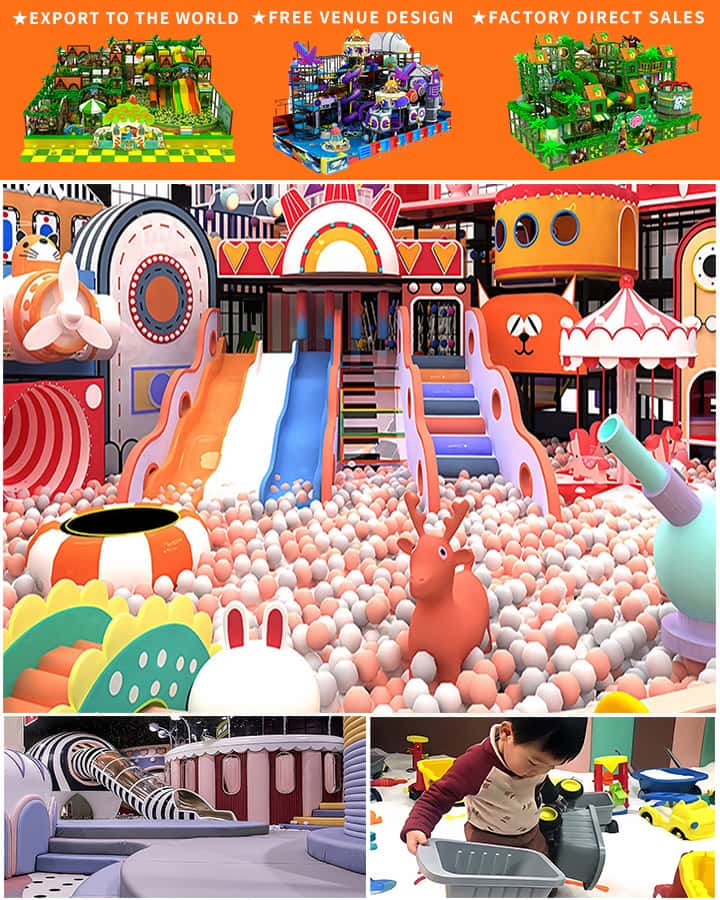Creating an indoor playground in your home is a fantastic way to ensure that children have a safe, enjoyable space for play, regardless of the weather outside. With a bit of creativity and planning, you can transform any room into an engaging environment that promotes physical activity, social interaction, and imaginative play. Here’s how to get started on designing your very own indoor playground for home.
Why Create an Indoor Playground?
An indoor playground offers a controlled and safe environment where kids can burn off energy, develop motor skills, and stimulate their creativity. It also provides a dedicated space for social interactions with siblings or friends, fostering teamwork and communication. Plus, having an indoor playground means you’re no longer at the mercy of bad weather; playtime can continue rain or shine!
Planning Your Indoor Playground
The first step in planning your indoor playground is to assess the available space in your home. Whether you have a large basement, a spacious living room, or even a spare bedroom, the key is to make the most of the area you have. Consider the following elements when planning:
- Safety First: Ensure the space is free from hazards. Soft flooring materials like foam tiles or rubber mats are ideal to prevent injuries from falls. Secure any heavy furniture and use corner guards to protect against bumps and bruises.

- Age-Appropriate Equipment: Choose equipment that suits your child’s age and developmental stage. For younger children, consider items like soft play structures, ball pits, and tunnels. For older kids, climbing walls, trampolines, and mini basketball hoops can provide hours of fun.
- Versatility: Opt for multifunctional and modular equipment that can grow with your child. Adjustable height settings and expandable components mean the playground can adapt as your child ages.
Creative Ideas for Different Areas
Depending on the space you have available, here are some creative ideas to incorporate into your indoor playground:
- Obstacle Course: Set up an obstacle course with tunnels, balance beams, and stepping stones. This encourages physical activity and problem-solving skills.
- Imaginative Play Zone: Dedicate a corner for dress-up and role-playing. Costumes, play kitchens, and puppet theaters can spark creativity and storytelling.
- Educational Corner: Incorporate learning into play with interactive boards, puzzles, and educational toys. This area supports cognitive development alongside physical activity.
- Relaxation Space: Don’t forget a cozy reading nook or a quiet area with bean bags and soft cushions where kids can unwind after active play.
Safety Considerations
Safety should always be a priority when designing an indoor playground:
- Non-Toxic Materials: Ensure all equipment is made from non-toxic materials and has no small parts that could pose a choking hazard.
- Supervision: Children should always be supervised while using the playground equipment to prevent accidents.
- Regular Maintenance: Check the equipment regularly for wear and tear and replace or repair any damaged items promptly.
Bringing it All Together
Designing an indoor playground for your home can be a rewarding project that brings endless joy to your children. By carefully selecting age-appropriate, safe, and versatile equipment, you can create a dynamic space that caters to your child’s physical, social, and cognitive development. Most importantly, an indoor playground allows for year-round fun, ensuring that playtime never has to be put on hold due to bad weather.
In conclusion, an indoor playground is more than just a place for your kids to play—it’s a space where they can learn, grow, and make memories. So, roll up your sleeves, get creative, and turn a corner of your home into a haven of fun and excitement!




